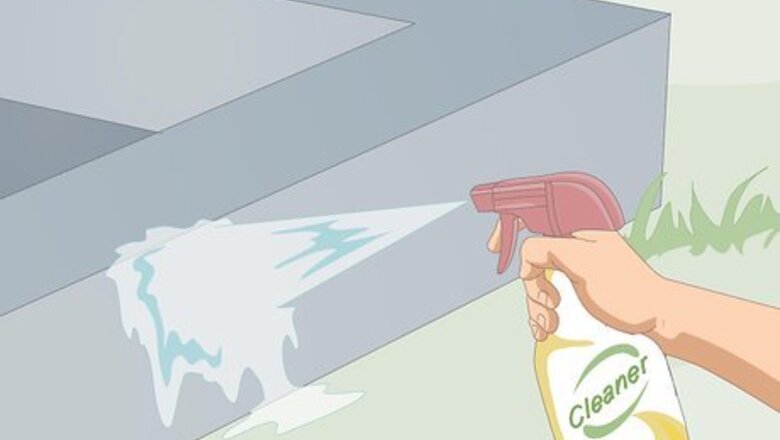
views
Removing Stains
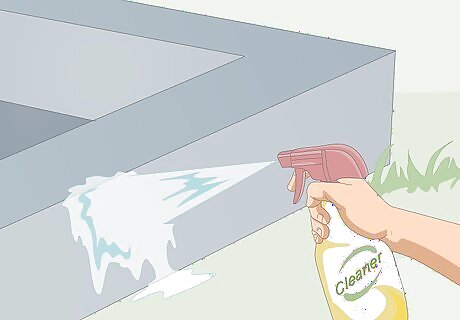
Test cleaners in an inconspicuous area first. No matter what cleaner you're using, it's always a good idea to test it first, particularly with stronger cleaners. Put a little cleaner on the stone in a spot that's out of the way. Leave it on for 5-10 minutes to see if it affects the bluestone. If the cleaner causes a change in the stone color (after it dries), you shouldn't use it on the stone. Be aware, though, that just lifting the grime off the stone can affect the color, so make sure it's the actual stone that's changing color.
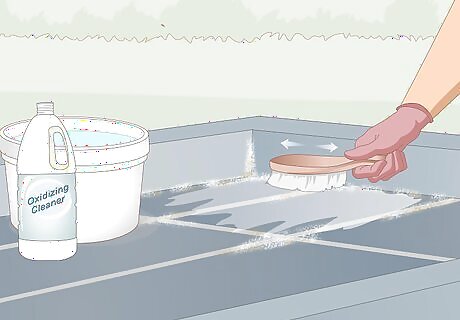
Apply an oxidizing cleaner to mold and mildew. Put on gloves and eye protection. Mix the cleaner into a bucket of water according to the package's instructions. Use a scrubbing brush to apply the cleaner to the surface, moving it back and forth to thoroughly cleanse the area. You can apply a lot of pressure to bluestone, so don't worry about harming it. Leave the cleaner on for at least 12-15 minutes. When you're done, make sure to rinse the area thoroughly. Oxidizers work by adding oxygen to the area, removing stains and grime. Bleach is an oxidizer, but many other cleaners are oxidizers, too, which is actually an oxygen bleach cleaner. Don't use this cleaner in direct sunlight, as it may evaporate before it can work. Pick a cleaner like Stain Solver for this purpose.
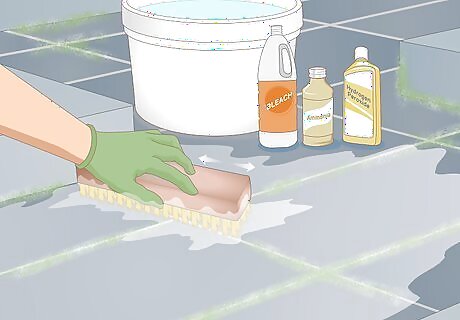
Try ammonia, bleach, or hydrogen peroxide for algae or mildew. Mix 0.5 cups (120 mL) of your chosen cleaner into 1 gallon (3.8 L) of warm water. Apply the cleaner with a scrubbing brush to the soiled area and let it sit for 5-10 minutes. Thoroughly rinse the area when you're done. Never mix ammonia and bleach, as the solution creates toxic gases!
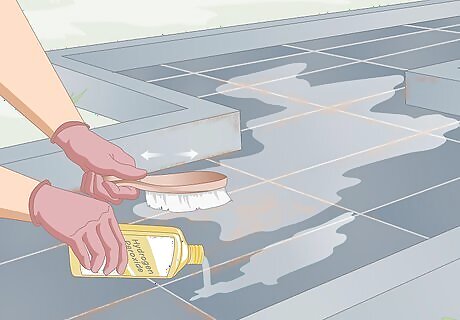
Scrub organic stains with hydrogen peroxide and a bit of ammonia. Scrub the area with a 12% hydrogen peroxide solution; you can buy it at this percentage in the store. Add a couple of drops of ammonia to particularly stubborn stains. If the stains don't seem to be coming up right away, leave it on the stone for 5-10 minutes, then rinse the area thoroughly. Organic stains include food, coffee, fecal matter, urine, and even blood stains.
Using Soap and Water
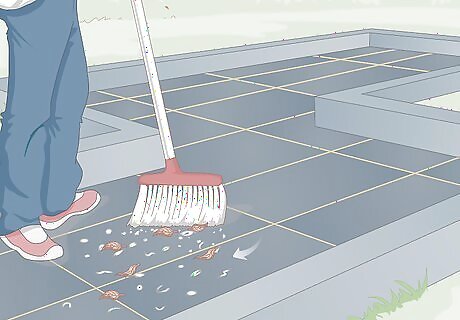
Clean off any debris first. You don't want to scrub leaves or dirt into the stone if you can help it. Sweep the area with a broom or wipe it down with a clean cloth to get it ready for scrubbing.
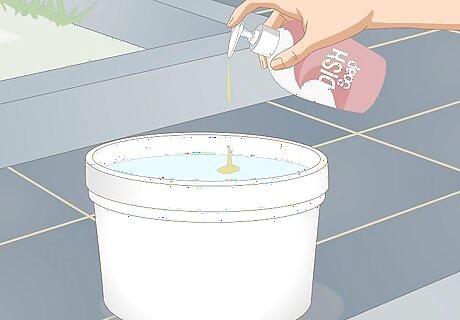
Mix dish soap and water in a bucket. Pour in ⁄2 cup (120 mL) or so of dish soap, then fill up the rest of the bucket with water. Slosh it around a little to mix the soap into the water. You just need enough dish soap to make the water sudsy.
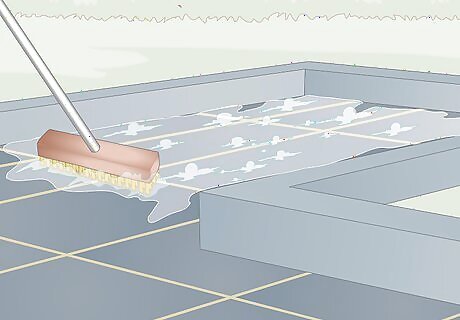
Scrub the area with a scrubbing broom or brush. Dip the brush or broom into the mixture, getting it thoroughly wet. Scrub the stone in a circular motion, making sure you scrub all of the tiles thoroughly. Dip the brush back into the mixture as it gets grimy. If you need to, wash the brush or broom out with a hose or in the sink. On stubborn areas, you can try a solution of half water, half vinegar or lemon juice.
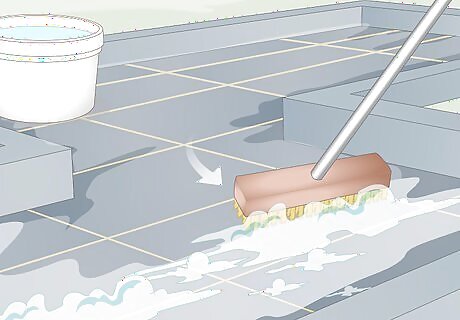
Rinse off inside areas with clean water. Once you've scrubbed down the whole area, dump out your bucket and fill it with clean water. Rinse out your brush or broom, then go over the tile or counter to rinse the soap off. On a counter, you can also use a clean cloth to rinse it off.
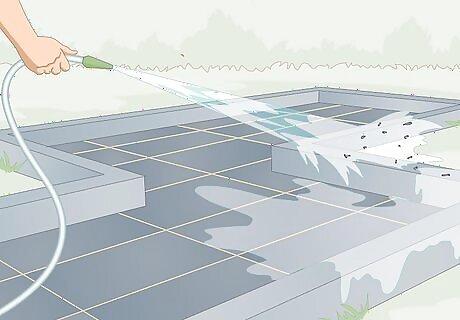
Spray outside areas with a small nozzle to get off dirt and caked-on grime. Attach a small sidewalk sweeper nozzle to the end of your hose. Turn the hose on full blast and run the thin stream of water over your window or door features or patio tile. Rinse all the soap and dirt off until the area is completely clean. You can find these nozzles at your home improvement store. You can also use a power washer, but it can scour the stone if you're not careful. You can also try a sprayer nozzle, but that may not be powerful enough.
Keeping Bluestone Clean
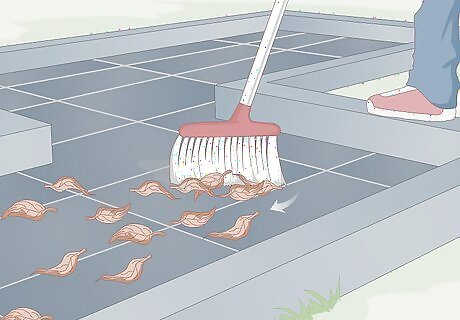
Sweep or wipe down the bluestone often. If your bluestone is used as tile, use a broom to sweep up debris daily. For countertops, gather up any crumbs or dirt that get on the counter at least once a day with a cloth. If your bluestone is on a door or window fixture, sweep off debris with a brush at least once a week.
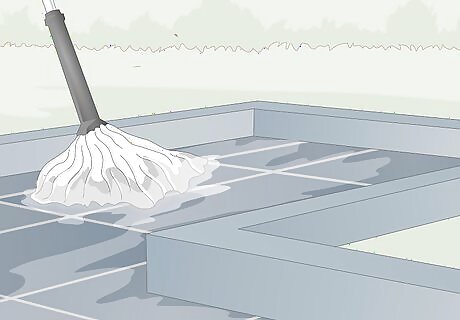
Wipe the area down with water. After getting rid of debris, dampen a cloth or sponge mop. Run the cloth or mop over the area to remove any sticky residue or dirt. Water is sufficient most of the time for cleaning bluestone. If you're outside, you can spray the area down with a hose.
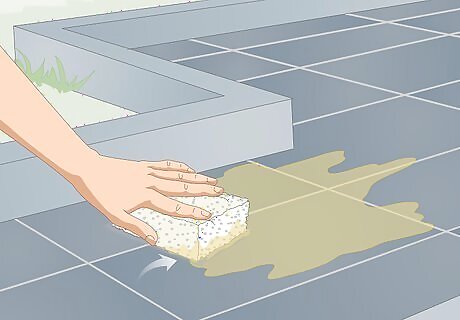
Dab up spills right when they happen. Use a clean cloth to dab at the spill until you absorb all that you can. Dip a clean sponge into a cup of warm water with a few drops of dish soap in it. Wipe the area down with the soapy water. Rinse the soap out of the cloth and wipe the area with plain water. You can also use a scrubbing brush or broom and soapy water to clean up bigger spills. Make sure to dab up the spill first, though. Spills can stain natural stones like bluestone if they're left to set.




















Comments
0 comment